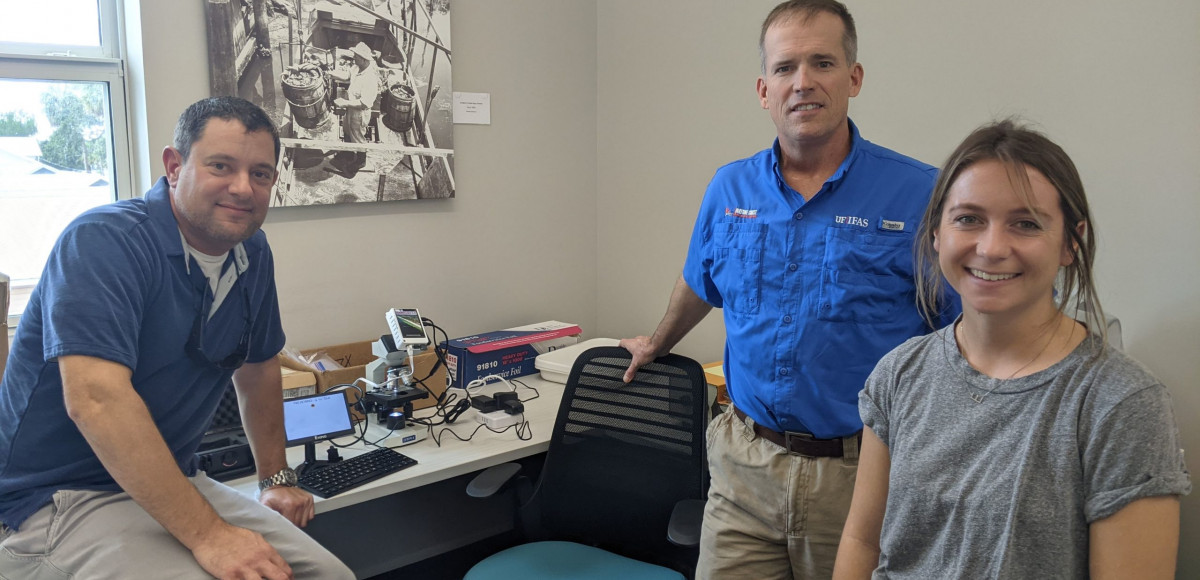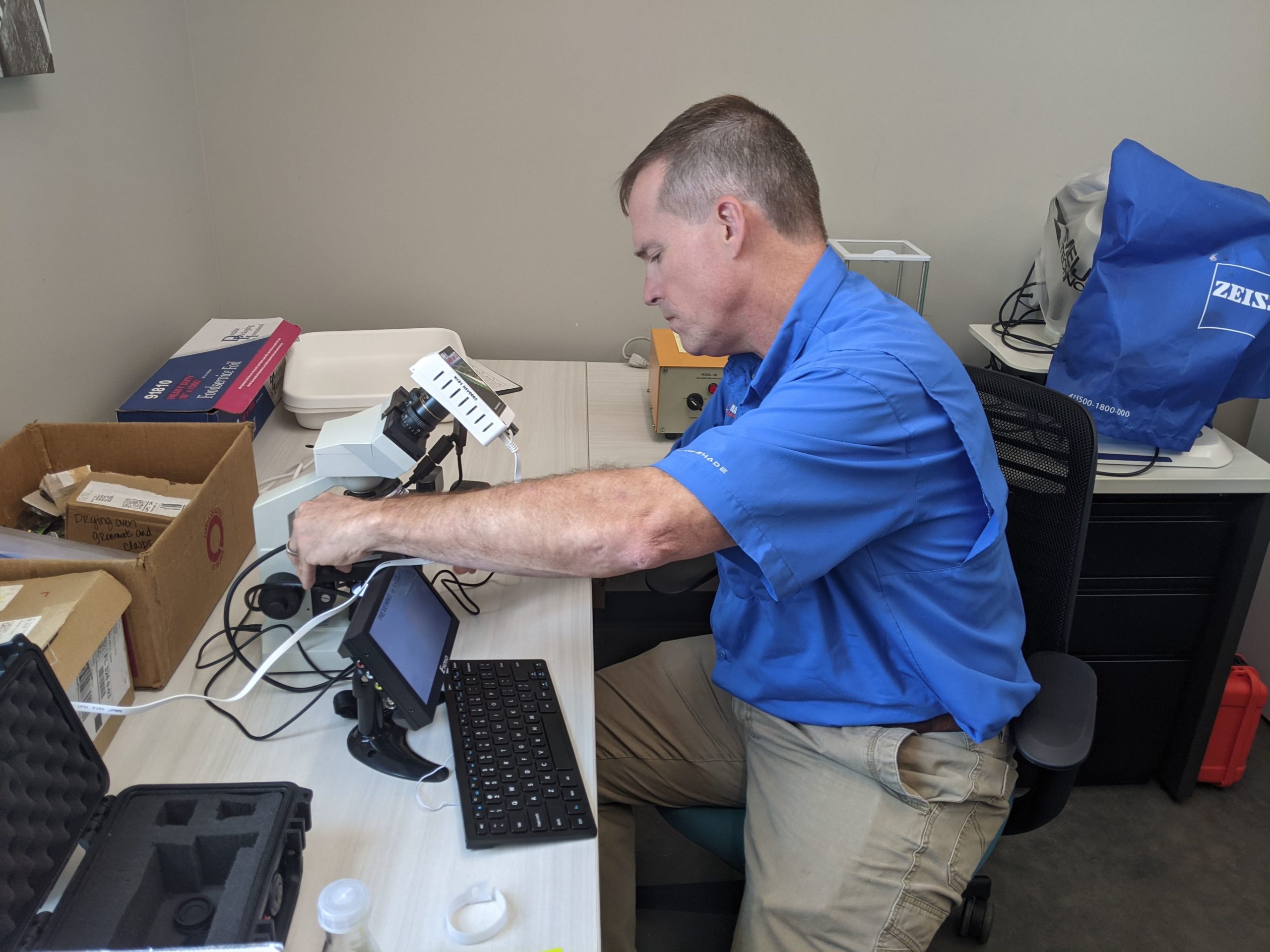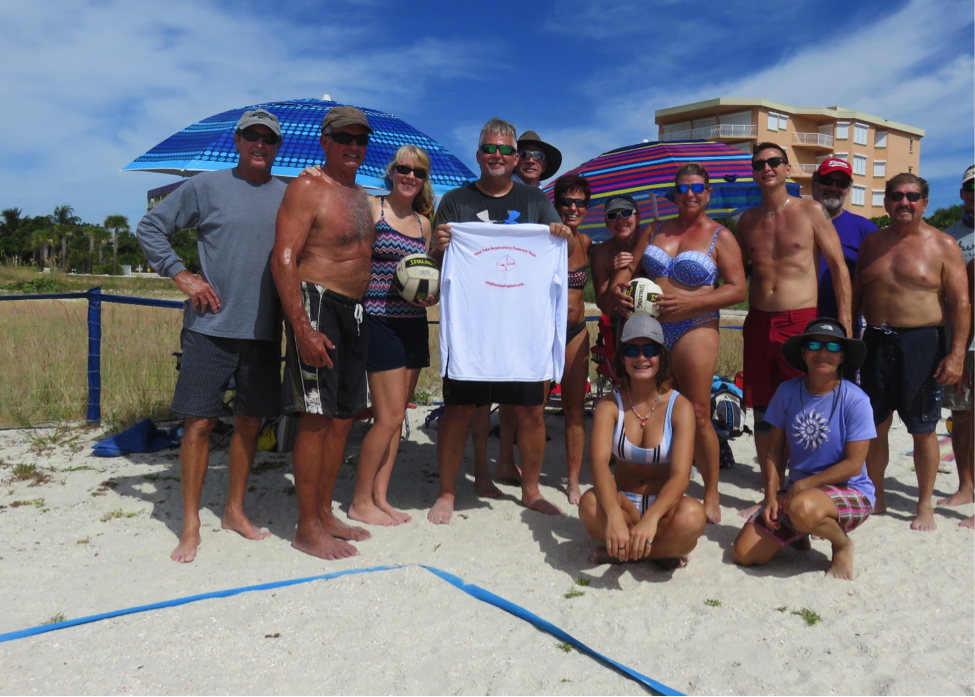
GCOOS Product Developer Bob Currier and Volunteer Coordinator Grant Craig made a trip to the University of Florida Nature Coast Biological Station at Cedar Key to drop off a HABscope 2.0 and show Dr. Mike Allen and his team how to use the new system to help support the Red Tide Respiratory Forecast.
The Forecast allows residents, tourists, and businesses along beaches to know whether respiratory impacts from red tide are expected to occur in their location and what the level of impact is expected to be. The Forecast system is activated when red tide is present along beaches and is provided in three-hour increments.

HABscope is a low cost, classroom-grade, portable microscope that has been outfitted with a special adaptor designed by the research team’s engineer and printed on a 3D printer. In the first HABscope, the adapter was used to mount an Apple iPOD touch to the eyepiece of the microscope. HABscope 2.0 now utilizes a Raspberry Pi computer, which has increased its programmability and made it even easier for volunteers to use.
Craig also delivered HABscope 2.0 to seasoned volunteers in Port Charlotte and Naples. Karl Kaukis is a retiree who has been steadily monitoring Stump Pass Beach State Park near his home in Port Charlotte. “His dedication and proficiency with HABscope sampling made him a perfect candidate to help test the new version,” Craig said.
Pradeepa Siva has been uploading samples and monitoring for red tide from Doctors Pass in Naples since January 2020. “I paddleboard daily and am concerned about the impacts of red tide on our beaches and wildlife — especially dolphins, which I often see while paddleboarding,” she said.
Environmental Specialist Rhonda Watkins of Collier County Pollution Control, is also now using a HABscope 2.0. Jennifer Clemente of the Florida Department of Health in Sarasota County has also joined the volunteer team. Clemente is part of the state’s Healthy Beaches Program, which provides routine bacterial monitoring for beaches. She will now also collect water samples to detect red tide, helping to expand beach coverage for the Red Tide Respiratory Forecast.
“We’re very excited to have HABscope 2.0 in the hands of volunteers testing its functionality and usability as we prepared to roll out the new system to the wider team in 2022,” Craig said.
The Red Tide Respiratory Forecast team includes individual volunteers with an interest in coastal stewardship, as well as professionals from state, local, and academic institutions who collect samples for the forecast in conjunction with their existing fieldwork and monitoring.
“It’s ideal to have a mix of people from the community, as well as professionals contributing to the Red Tide Respiratory Forecast,” said Dr. Barbara Kirkpatrick, GCOOS Senior Advisor and Principal Investigator for the project. “This allows us to identify and fill monitoring gaps in an effort to cover every beach every day. Volunteers are really playing a key role in maintaining and expanding the Forecast to a greater number of beaches.”
And the expanding Forecast is getting noticed! Recently, a group that has gathered for more than three decades to play volleyball on Treasure Island, Florida, discovered how useful it is following a historic fish kill in Tampa Bay.
“The widespread, prolonged red tide in the Tampa Bay area has made it difficult to know what conditions will be like at the beach,” said player Kevin Kowzan. “I have to drive more than an hour to get to Treasure Island so knowing the conditions before heading out is really helpful. But it’s not just volleyball. I’m a professional aquarist and collector. The Red Tide Respiratory Forecast has saved me countless hours and lots of money by helping me avoid harvesting in affected areas and pinpointing safer places to collect during this bloom that has gone on forever.”














